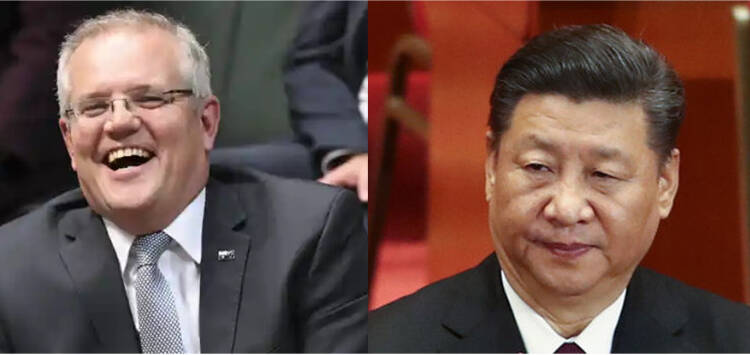China’s trade wars against Australia are a huge blunder that keeps backfiring. First, China’s power sector and steel mills ran into a shortage of coal, after Beijing imposed an unofficial bar on Australian coal imports. Then, China realised that Australia is finding new markets like Japan and India, in response to the Chinese tariff wars. And now, Canberra has also started shoring up its influence in Southeast Asia at China’s expense.
Australian wheat is one of the many commodities that Beijing has targeted in its trade war against Canberra. This year Australia had a bumper wheat crop and the paper dragon wanted to hurt Australian agriculture by cutting down on imports of the staple crop from down under. Yet, the Scott Morrison government in Australia has found a solution- it has started to look at Southeast Asia as a huge market for selling the bumper wheat crop.
Bloomberg has reported that as per Andrew Whitelaw, a Melbourne-based agricultural expert, increased wheat supplies from Australia and lack of production elsewhere due to weather issues, are likely to pivot buyers in Vietnam, Indonesia and Thailand, back to Australia.
This should help Australia gain a lot of soft power in these Southeast Asian nations. Remember, wheat is a strategic good. It is used in almost everything from bread to cakes, and pasta. This year Australia is anticipated to produce its second-largest wheat crop of more than 30 million tons, on the back of widespread rains.
Whitelaw added, “In recent years, we haven’t had the volumes to meet the demand of Southeast Asia.” But this season is different for three reasons- one, Australia had a bumper crop, two, other parts of the world had a poor crop and three, China has waged a trade war against Australia and therefore Canberra anyway has more wheat to export.
Australian wheat hasn’t been figuring at the top of Beijing’s trade wars. The commodity hasn’t been hit by Chinese tariffs per se. Yet, there are ominous signs- the Middle Kingdom purchased just 888 tons of Australian wheat in November last year, lowest since 2011, as per Bloomberg.
What China, however, didn’t realise that its unfair trade wars are allowing Australian wheat producers to find new markets. Apart from Southeast Asia, Australian wheat can also find new markets like North Africa and the Middle East, which have traditionally sustained themselves on Russian and European supplies.
Yet, Australian wheat supplies to Southeast Asia is what will get Chinese President Xi Jinping worried. Southeast Asian nations have strong trade ties with China, yet China-ASEAN ties can be hardly described as comfortable. Led by Vietnam, the Association of Southeast Asian Nations, also called ASEAN, is protesting against Beijing’s South China Sea belligerence.
Also, China, being an upper Mekong Basin country, continues to dam a major share of Mekong river water and dry out the Lower Mekong Basin (LMB) nations like Vietnam and Thailand. China is robbing the Lower Mekong Basin countries, which are completely dependent on the Mekong River, of their water, rice and fish.
On the other hand, Australia is ensuring that the Lower Mekong Basin countries don’t starve by shifting its wheat supplies to Southeast Asia. Chinese President Xi Jinping’s trade wars against Australia have thus boomeranged on Beijing once again. Vietnam and other Southeast Asian nations are thus coming closer to each other, while China looks on helplessly.
